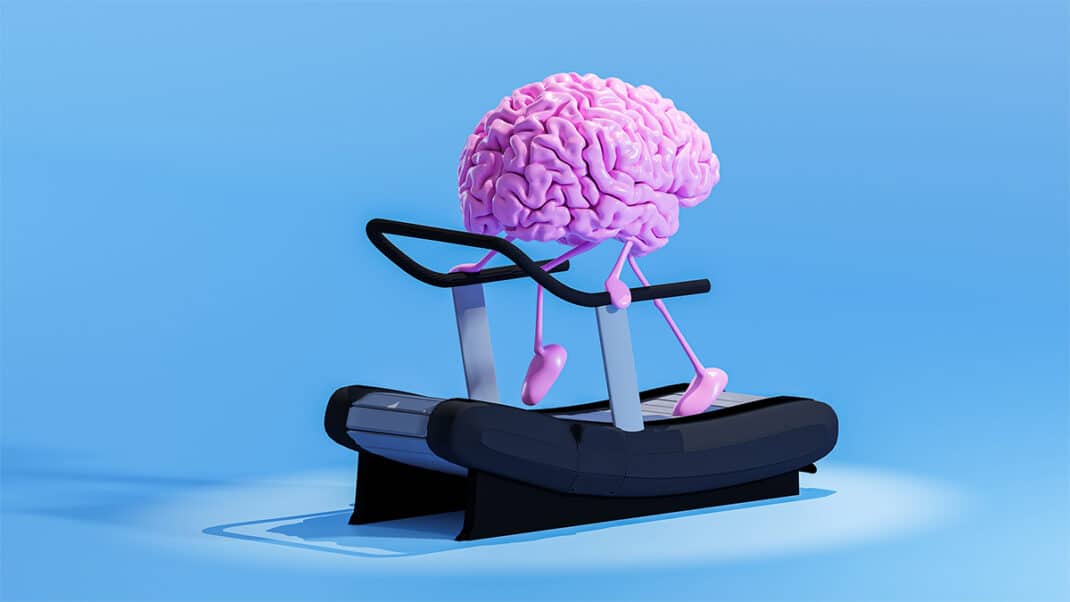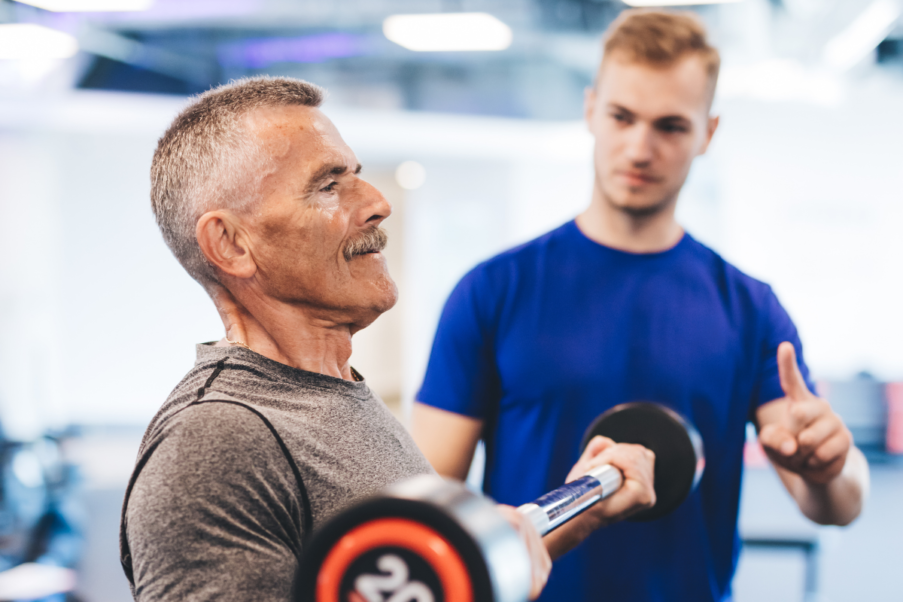Holistic Approaches to Health: Combining Physical Training with Mental Well-being for Optimal Client Results

Holistic health is an increasingly popular and effective approach to fitness and wellness, especially as we come to understand the complex connections between the body and mind. Health and fitness professionals today are recognizing that true wellness goes beyond physical strength or endurance; it involves supporting the mental, emotional and psychological aspects of well-being that directly influence physical performance and overall health outcomes. This holistic perspective is crucial not only for helping clients reach their goals, but also for fostering sustainable, life-long habits that support well-rounded wellness.
This article explores the integration of mental health science with physical training to maximize client outcomes. By understanding the connections between physical activity and mental health, designing fitness programs that support both areas, and incorporating mental health check-ins into sessions (and identifying the need for referrals early on), health and fitness professionals can create a more comprehensive approach to client wellness. Let’s examine the research-backed benefits of combining mental well-being with physical fitness and explore practical strategies for implementing these methods into training and health coaching.

The Connection Between Physical and Mental Well-being
A substantial body of research emphasizes the intertwined nature of physical and mental health. Physical exercise has well-documented effects on improving mood, reducing anxiety and enhancing cognitive function, while a stable mental state can contribute to better motivation, focus and resilience in physical training. For health and fitness professionals, understanding this relationship is essential for creating training plans that not only improve physical fitness but also contribute to a client’s mental well-being.
Physical Fitness and Mental Health Benefits
- Exercise as an Antidepressant: Numerous studies have shown that regular physical activity can be as effective as medication for mild to moderate depression. For instance, research has demonstrated that aerobic exercise increases the release of endorphins and serotonin, neurochemicals that regulate mood and relieve pain (Mayo Clinic). Additionally, exercise stimulates the production of brain-derived neurotrophic factor (BDNF) which supports brain health and has been linked to improved mood and cognitive function (Sleiman, et al., 2016).
- Reducing Anxiety and Stress: Physical exercise also serves as a powerful tool for reducing anxiety and managing stress levels. During exercise, the body’s autonomic nervous system shifts, leading to reduced levels of cortisol and other stress hormones (Harvard Health, 2020). Regular physical activity helps individuals become more resilient to stress by improving their physiological responses and recovery times.
- Cognitive Benefits of Exercise: Exercise improves blood flow to the brain and promotes neural growth, which enhances cognitive functions like memory, focus and learning ability (Erickson et al., 2011). For clients aiming to maintain mental sharpness or manage cognitive decline, physical fitness is a key component of brain health.
- Physical Activity as a Coping Mechanism: Engaging in regular exercise provides clients with a healthy outlet to cope with daily challenges, fostering a sense of accomplishment and self-efficacy (Pekmezi, et al., 2009). Physical fitness becomes more than just a task; it serves as a means of regulating emotions and building resilience.
Mental Well-being as a Foundation for Physical Health
Conversely, mental health also plays a crucial role in supporting physical fitness outcomes. Clients who experience high stress levels, anxiety or depression often have difficulty committing to exercise regimens. Research indicates that mental health symptoms like fatigue, low motivation and difficulty concentrating can interfere with regular physical activity (Stubbs et al., 2016). By addressing mental health concerns alongside physical training, trainers can help clients maintain motivation and adherence to their fitness goals, ultimately achieving better results.
Understanding the bidirectional relationship between physical and mental health allows fitness professionals to design programs that align with clients’ comprehensive wellness goals, making training more effective and beneficial in the long term.

Designing Fitness Programs for Mental and Physical Health
Crafting a fitness program that supports holistic well-being involves more than simply pairing exercises for strength and endurance with calorie counts or cardio goals. To truly address both mental and physical health, programs should integrate components that nurture emotional resilience, stress management, reflection and self-awareness while also achieving physical fitness objectives. These programs go beyond traditional training models, incorporating techniques that promote mindfulness, mental focus and emotional grounding.
Key Components of a Holistic Fitness Program
- Mindfulness and Breathing Exercises: Mindfulness and breathwork are valuable tools for helping clients manage stress and stay grounded during workouts. Incorporating breathing techniques can help calm the mind, enhance focus and prepare clients mentally for physical exertion. Techniques such as diaphragmatic breathing and paced breathing exercises can be used before or during workouts to support mental relaxation, reduce stress and improve oxygen flow (Cleveland Clinic, 2022).
- Setting Mental and Emotional Goals Alongside Physical Goals: Encouraging clients to establish mental and emotional goals provides a balanced approach to their wellness journey. While physical milestones like increased strength or weight loss are important, mental goals such as improved resilience, stress reduction or better emotional regulation also bring significant value. Including these mental objectives in the initial planning stage of a fitness program reinforces a mindset shift from purely physical achievements to holistic growth.
- Incorporating Positive Visualization Techniques: Visualization exercises help clients mentally prepare for challenges and build self-efficacy. For example, before a challenging set or high-intensity session, clients can be guided to visualize successful completion of the exercise, focusing on the positive feelings associated with achieving their goals. Visualization techniques not only improve performance but also increase confidence and motivation, especially when clients face plateaus or setbacks (Taylor, 2020).
- Designing Flexible Programs to Account for Mental States: Fitness professionals can create programs that adapt to the client’s mental and emotional state on any given day. For instance, if a client is experiencing high stress or anxiety, opting for a lighter workout focused on mobility, stretching or moderate cardio can be more beneficial than intense strength training. This adaptability allows trainers to support clients holistically, respecting both their physical capacity and their emotional well-being (IDEA, 2015).
- Including Social and Community Elements: Social support is a powerful motivator in both mental and physical health. Programs that incorporate group activities, partner exercises or virtual communities can strengthen clients’ sense of connection and accountability. Research suggests that social interaction reduces feelings of isolation, improves mood and increases adherence to fitness programs – particularly among older adults (Rabbani, et al., 2021). By creating an environment where clients feel connected, trainers can foster a sense of belonging that enhances both mental and physical progress.
Practical Techniques for Fitness Professionals
- Mindful Warm-ups and Cool-downs: Beginning or ending each session with a few minutes of mindful stretching or meditation can help clients relax, focus and become more present. Mindful cool-downs also provide a moment to reflect on achievements, reinforcing positive feelings associated with the workout.
- Mental Skills Training (MST): MST includes techniques like goal setting, mental rehearsal and self-talk, which can be seamlessly integrated into workout routines. Teaching clients to use positive self-talk during tough moments or to rehearse movements in their minds before executing them enhances mental strength, which contributes to improved performance (Wagner, et al., 2022).
By integrating these elements into fitness programs, trainers can help clients achieve a deeper sense of fulfillment and resilience in their fitness journeys. Not only do these strategies support physical performance, they also lay a foundation for improved mental health, enhancing the overall effectiveness of the training experience.

Integrating Mental Health Check-ins and Progress Tracking
To provide comprehensive support, health and fitness professionals can consider incorporating mental health check-ins into their client interactions. This approach involves assessing a client’s mental state and emotional well-being alongside their physical progress, allowing trainers to identify any mental barriers that could impact adherence to the program or hinder performance. It is important to note that this is not for counseling purposes but rather to gauge the client’s stress and mood. By tracking both physical and mental progress, professionals can offer a well-rounded, supportive environment that reinforces the client’s overall wellness journey.
Importance of Mental Health Check-ins in Training
For many clients, emotional and psychological factors play a crucial role in their fitness journeys. Mental health check-ins create a space for clients to discuss challenges, setbacks or mental blocks that may affect their motivation or physical performance.
Mental check-ins can vary in depth based on the client’s comfort level and needs. Clients may benefit from a brief verbal check-in about their mood or stress levels. Regular check-ins can help trainers gauge how life events, work stress or other external factors might impact a client’s energy levels or motivation, allowing them to adjust the program accordingly.
Effective Techniques for Mental Health Check-ins
- Mood and Stress Questionnaires: Brief, standardized questionnaires are a simple, non-intrusive way to gather information on a client’s current mood and stress. Tools like the Perceived Stress Scale (PSS) or can provide insight into stress, anxiety or depressive symptoms (Harris et al., 2023). These assessments can be integrated monthly or quarterly to monitor changes and identify patterns over time.
- Regular Verbal Check-ins: Starting each session with a brief, open-ended question such as “How are you feeling today?” or “What’s on your mind?” invites clients to share any mental or emotional concerns. This approach allows clients to speak freely without feeling pressured, creating a supportive environment where they feel heard and valued.
- Reflective Journaling: Encouraging clients to maintain a journal where they can document their thoughts, feelings and reflections about their fitness journey fosters self-awareness. Journals can help clients recognize patterns, track mood changes and reflect on personal growth. Reflective journaling also serves as a record that trainers can review with clients during regular check-ins, helping them stay engaged with both their physical and mental health goals (Lepore & Smyth, 2002).
- Mindfulness and Guided Reflection Exercises: Integrating a short mindfulness or reflection exercise at the beginning or end of each session can serve as an additional check-in. Techniques like deep breathing, body scans or guided visualization help clients tune into their mental and physical states, allowing trainers to observe any changes in mood, energy, or focus.

Tracking Progress for Both Mental and Physical Health
Just as physical metrics—such as weight, strength or endurance—are tracked to measure progress, tracking mental health indicators can be an essential part of assessing a client’s overall wellness journey. Mental progress tracking allows clients to see how their mental and emotional resilience evolves, highlighting the benefits of a holistic approach to health.
- Progress Notes and Mood Logs: Keeping detailed session notes that record the client’s mood, energy levels and performance can help trainers identify patterns or recurring challenges. Mood logs can help track whether a client consistently feels more positive and motivated following a workout, indicating improved mental resilience over time.
- Monthly Wellness Reviews: Conducting a monthly or quarterly wellness review where clients evaluate their achievements, mood shifts and emotional well-being offers valuable insights into their mental progress. This can also be a time for clients to reset or adjust their mental goals, fostering a sense of ownership in their journey.
- Visual Progress Mapping: Creating a visual map of the client’s physical and mental milestones over time can be motivating. Visual progress maps might include metrics such as stress levels, energy ratings or self-confidence scores alongside physical achievements like strength or flexibility gains. Visuals provide a tangible representation of progress, reminding clients of their holistic achievements.
By embedding these check-ins and progress tracking methods into their coaching routines, health professionals can cultivate a supportive and personalized approach that prioritizes both mental and physical health. This approach not only enhances the client’s experience but also builds a trusting, open relationship, making clients feel more engaged and supported in their wellness journey.
Benefits of a Holistic Approach for Clients and Trainers
Adopting a holistic approach in fitness and health coaching offers far-reaching benefits that can transform the client-trainer relationship and improve overall outcomes. By addressing both the mental and physical aspects of health, trainers can help clients achieve not only physical results but also enhanced mental resilience, self-awareness and life satisfaction. This dual focus supports clients in maintaining long-term wellness and cultivates a sense of purpose in their health journey.
Benefits for Clients
- Enhanced Physical Results through Mental Well-being: When mental and physical health are addressed simultaneously, clients are more likely to experience improved physical performance. For example, clients who engage in mindfulness practices or visualization exercises are better equipped to manage stress, focus on their goals and stay motivated (Luberto et al., 2018). Mental resilience helps clients overcome challenges, preventing burnout and increasing their capacity to stay committed to their fitness routines.
- Improved Emotional Resilience and Self-Efficacy: Holistic programs foster emotional resilience, empowering clients to handle challenges both inside and outside the gym. By achieving mental and physical milestones, clients develop a sense of accomplishment that enhances their self-efficacy. Research suggests that as self-efficacy improves, individuals are more likely to pursue and achieve their health and wellness goals, creating a positive feedback loop that reinforces their dedication (Bandura, n.d.).
- Increased Adherence and Motivation: Clients who experience mental health benefits alongside physical results are often more motivated to continue their fitness programs. When clients feel mentally supported and see improvements in stress, anxiety and mood, they are more likely to stay engaged in their programs over time.
- Higher Satisfaction and Long-term Wellness: By addressing both aspects of health, clients experience a greater sense of satisfaction with their progress, feeling that their entire well-being is being considered. This holistic approach nurtures lasting habits that support clients’ physical and mental health, even outside the structured program.

Benefits for Trainers
- Strengthened Client Relationships: Trainers who prioritize both mental and physical health often develop deeper, more trusting relationships with clients. This approach shows that the trainer is invested in the client’s well-being as a whole, which enhances client loyalty and satisfaction. Clients feel valued and are more likely to openly communicate about their challenges, allowing trainers to provide more effective and tailored support (PT Distinction, n.d.).
- Differentiation in a Competitive Market: In a crowded field, offering a holistic approach to fitness helps trainers stand out. As clients increasingly seek programs that support comprehensive health, trainers who provide integrated mental and physical wellness support can attract and retain more clients. This unique approach can add value to traditional fitness programs, making them more appealing and effective.
- Increased Fulfillment and Professional Growth: Trainers who adopt a holistic approach often report a deeper sense of fulfillment, as they can witness the transformative impact of their work on clients’ lives. Supporting clients in achieving both physical and mental wellness provides trainers with rewarding experiences and helps build meaningful connections. This approach also encourages continuous learning, as trainers expand their skills in mental health awareness, motivational interviewing and mindfulness practices (Miller & Rollnick, 2023).
- Improved Client Outcomes and Success Stories: Holistic programs tend to produce more sustainable outcomes, with clients seeing improvements in both physical fitness and emotional well-being. This dual success reinforces the trainer’s reputation and credibility, as clients share their positive experiences and refer others. The integration of mental and physical health strategies leads to higher client satisfaction, setting the foundation for powerful success stories that enhance the trainer’s impact and client reach.
The holistic approach is more than a trend; it represents a paradigm shift in health and fitness coaching. By fostering a balanced focus on both mind and body, trainers can build a practice that supports comprehensive wellness, benefits client satisfaction and creates a fulfilling career path rooted in meaningful, lasting change.
In the modern fitness landscape, addressing both mental and physical aspects of health is essential for delivering effective, sustainable results for clients. As research and client demand for holistic health approaches continue to grow, certified health and exercise professionals are uniquely positioned to make a meaningful difference in their clients’ lives by integrating mental wellness with physical training. This article has explored the connection between mental well-being and physical fitness, outlined strategies for designing programs that address both and highlighted the benefits of incorporating mental health check-ins and progress tracking.
Action Steps for Health and Exercise Professionals
To put these holistic principles into practice, here are several actionable steps that trainers and health professionals can take:
- Incorporate Brief Mental Health Check-ins: Begin each session with a short mental check-in by asking open-ended questions about the client’s current mood, stress levels or energy. This allows trainers to adapt the workout to the client’s emotional and physical needs, showing that their wellness is considered as a whole.
- Set Both Physical and Mental Health Goals: During the initial assessment, work with clients to set clear mental health goals (e.g., reduced stress, improved focus, growth mindset) alongside physical goals. Regularly revisit these goals to ensure that the program continues to support their overall well-being.
- Integrate Mindfulness and Breathing Exercises: Implement short breathing or mindfulness exercises before or after workouts. Techniques like deep breathing, body scans or guided visualization can help clients manage stress and improve mental clarity, enhancing their training outcomes.
- Track Mental and Physical Progress: Use simple tools, such as mood logs or progress notes, to track clients’ mental health improvements along with physical metrics. This dual tracking highlights the interconnected benefits of physical fitness and mental resilience, providing clients with a fuller picture of their progress.
- Encourage Reflective Journaling: Suggest that clients keep a journal where they can document their thoughts, reflections and progress. Reviewing these entries during check-ins can foster self-awareness, help clients recognize patterns and keep them engaged in their fitness journey.
- Learn Mental Health First Aid: Adult Mental Health First Aid (MHFA) is worth the investment. Completing MHFA training can provide significant benefits to personal trainers and other fitness professionals by equipping them with the skills and knowledge to support clients’ mental well-being.
By following these steps, health and exercise professionals can support a well-rounded approach to client wellness, leading to greater satisfaction, improved outcomes and stronger client relationships. A holistic strategy not only enhances clients’ physical abilities but also strengthens their mental resilience, resulting in a more balanced, fulfilling and sustainable path to health. Adopting this comprehensive approach reflects a commitment to true wellness, enabling clients to thrive both inside and outside the training environment. Note: In supporting a client’s mental well-being, it is critical to refer clients to the appropriate licensed mental healthcare provider should they display feelings related to anxiousness, depression, hopelessness and/or are experiencing other concerns outside your designated scope of practice. Be sure to include mental health professionals in your network.
References
- Bandura, A. (n.d.). Self-efficacy theory. ScienceDirect. Retrieved January 17, 2025, from https://www.sciencedirect.com/topics/psychology/self-efficacy-theory
- Cleveland Clinic (2022). Diaphragmatic Breathing. Retrieved from https://my.clevelandclinic.org/health/articles/9445-diaphragmatic-breathing
- Erickson, K. I., Voss, M. W., Prakash, R. S., et al. (2011). Exercise training increases size of hippocampus and improves memory. PNAS, 108(7), 3017-3022.
- Harvard Health (2020). Exercising to relax. Retrieved from https://www.health.harvard.edu/staying-healthy/exercising-to-relax#:~:text=The%20mental%20benefits%20of%20aerobic%20exercise%20have,the%20body’s%20natural%20painkillers%20and%20mood%20elevators.
- Harris, K. M., Gaffey, A. E., Schwartz, J. E., Krantz, D. S., & Burg, M. M. (2023). The Perceived Stress Scale as a Measure of Stress: Decomposing Score Variance in Longitudinal Behavioral Medicine Studies. Annals of behavioral medicine: a publication of the Society of Behavioral Medicine, 57(10), 846–854. https://doi.org/10.1093/abm/kaad015
- IDEA Health & Fitness Association. (2015) Mind-body personal training. IDEA Health & Fitness Association. Retrieved January 17, 2025, from https://www.ideafit.com/mind-body-personal-training/
- Lepore, S. J., & Smyth, J. M. (2002). The writing cure: How expressive writing promotes health and emotional well-being. American Psychological Association. Retrieved from https://psycnet.apa.org/record/2002-01516-000
- Luberto, C. M., Shinday, N., Song, R., et al. (2018). A systematic review and meta-analysis of the effects of meditation on empathy, compassion, and prosocial behaviors. Mindfulness, 9(3), 708-724.
- Mayo Clinic (2019). Exercise and stress: Get moving to manage stress. Retrieved from https://www.mayoclinic.org/healthy-lifestyle/stress-management/in-depth/exercise-and-stress/art-20044469
- Miller, W. R., & Rollnick, S. (2023). Motivational interviewing: Helping people change(4th ed.). Guilford Press.
- Pekmezi, D., Jennings, E., & Marcus, B. H. (2009). Evaluating and enhancing self-efficacy for physical activity. ACSM’s Health & Fitness Journal, 13(2), 16–21. https://doi.org/10.1249/FIT.0b013e3181996571
- PT Distinction. (n.d.). Mindset and mental health in personal training. PT Distinction. Retrieved January 17, 2025, from https://www.ptdistinction.com/blog/mindset-mental-health-personal-training#:~:text=As%20a%20personal%20trainer%2C%20integrating,to%20their%20preferences%20and%20goals.
- Rabbani, M., Parry, K., Winter, S., & Ismaeel, H. (2021). A qualitative exploration of sport coaches’ psychological safety. Journal of Sport and Health Science, 3(1), Article 100027. https://doi.org/10.1016/j.jshs.2021.03.002
- Sleiman, S. F., Henry, J., Al-Haddad, R., El Hayek, L., Abou Haidar, E., Stringer, T., Ulja, D., Karuppagounder, S. S., Holson, E. B., Ratan, R. R., Ninan, I., & Chao, M. V. (2016). Exercise promotes the expression of brain derived neurotrophic factor (BDNF) through the action of the ketone body β-hydroxybutyrate. eLife, 5, e15092. https://doi.org/10.7554/eLife.15092
- Stubbs, B., Vancampfort, D., Rosenbaum, S., et al. (2016). An examination of the anxiolytic effects of exercise for people with anxiety and stress-related disorders: A meta-analysis. Psychiatry Research, 244, 106-113.
- Taylor, J. (2020). Visualisation techniques in sport: The mental road map for success. ResearchGate. Retrieved January 17, 2025, from https://www.researchgate.net/publication/344587632_Visualisation_techniques_in_sport_-_the_mental_road_map_for_success
- Wagner, S., Kennedy, M., Hansen, J., & Reiter, M. (2022). The impact of interprofessional education on healthcare students: A systematic review. The Internet Journal of Allied Health Sciences and Practice, 22(3), Article 6. Retrieved January 17, 2025, from https://nsuworks.nova.edu/ijahsp/vol22/iss3/6/





